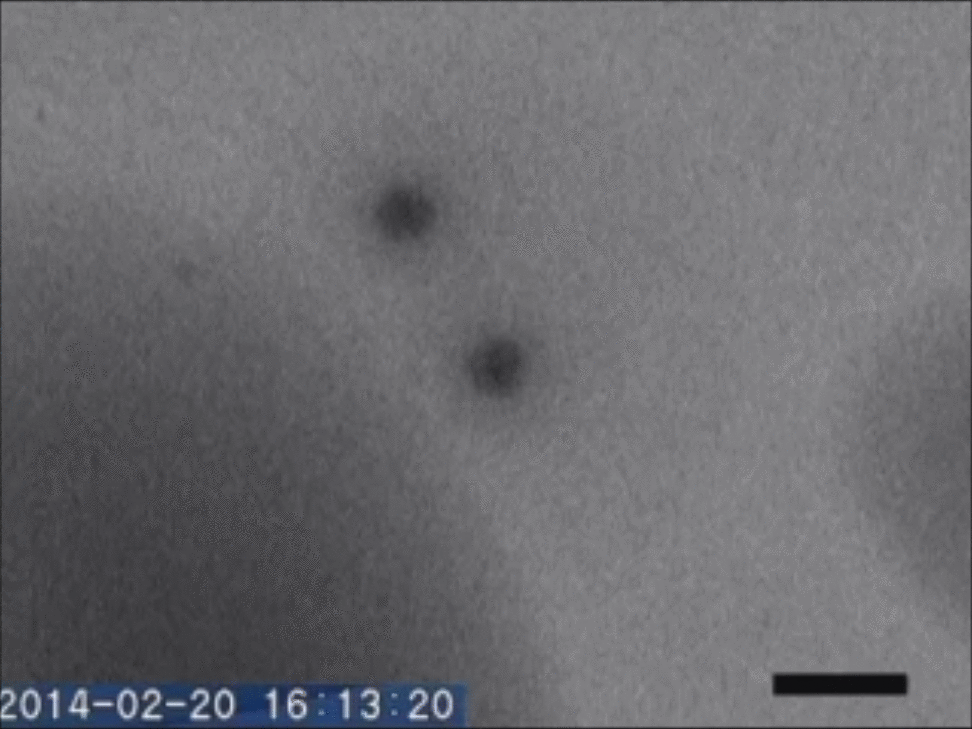
Nucleation is a mysterious phenomenon that is difficult to be observed experimentally because the size of nuclei is as small as nanoparticles or even smaller, and, therefore, possible observation methods and the resulting understanding of the nucleation processes is very limited.
Recently, transmission electron microscopy using a liquid cell has been developed so that pre-nucleation and nucleation processes even in a solution could directly be observed in situ. This method has shown us totally different nucleation pathways from the classical nucleation pathway thanks to visualization of a time resolved nucleation processes of nanoparticles from a solution. We found the processes surprisingly complex instead of being clarified which puzzled us so far. Further developments of the microscopy and related techniques might make it a puzzle of more complexity or hopefully something clearer. In this symposium, we may be able to find hints to unpuzzle more realistic nucleation mechanisms than the classical nucleation mechanism suggested. In the school lectures we will prepare the topics on classical nucleation and non-classical nucleation, being discussed from both theories and experimentals.
In the symosium/school we can discuss on the nucleation of nano-particles, colloids, quasicrystals and so on, as well as classical and non-classical nucliation.
Under construction.

Professor Sunagawa was the first person who started to observe the crystals and minerals surfaces by phase contrast microscopy in 1960’s. The phase contrast microscopy is based on the simple physical principle which was invented by Zernike who was awarded Nobel prize and is capable to see mono-molecular growth steps on crystals. The technique is still very important to study the history, and the mechanism of the crystal growth. As seen in the study of SiC and protein crystal growth, we still employ this microscopy and the similar interferometry to improve the quality of crystals as well as to study the growth mechanism.
New optical microscopic and interferometric techniques have been developed so far, about which we will be able to experience during the experimental course of this school. Modern AFMs are also available.
The interface is also related to the growth rate and so to the growth mechanism, for instance, through roughening transition or 2D nucleaton. The interface patterns are the results of crystal growth or dissolution, the mechanism and the hisotry or perfection can be analyzed.
Morphology of Nano-particles and Crystals will be discussed based on various ideas including periodic bond chain (PBC) models and structural considerations. This ideal was later improved by considering the effect of environmental conditions and surface roughening in the group of Professor Bennema in the Netherlands.
Importance of screw dislocations on crystal growth under low supersaturation was theoretically proposed by F. C. Frank in 1949. Immediatelly the following year, spiral growth steps that predicted by Frank was found on prism faces of beryl crystals. Why nobody could report such spiral step patterns before Frank? Probably it was due to the lack of the viewpoint what the spiral patterns mean. Theories give us an answer how to observe the nature.
As the development of the study of crystal growth, the theories are getting minute and complex, so we can no longer obtain the solution by analytic methods. As the progress of observation or experimental equipments, the data is getting too huge to handle by human power. The numerical techniques, such as machine learning, will become important in this field as well.
In this symposium/school, we would like to discuss how theories, simulation and machine learning should play a leading role on the study of crystal growth.
The methods of surface observation are mainly introduced. Recent developments in the technologies and methodologies will be reviewed, AFM with atomic resolution, modern microscopies and high resolution highspeed interferometry. These modern are utilized not only for the fundamental researches but also for characterization of semiconductors and so on.
Under construction.
Under construction.
Under construction.